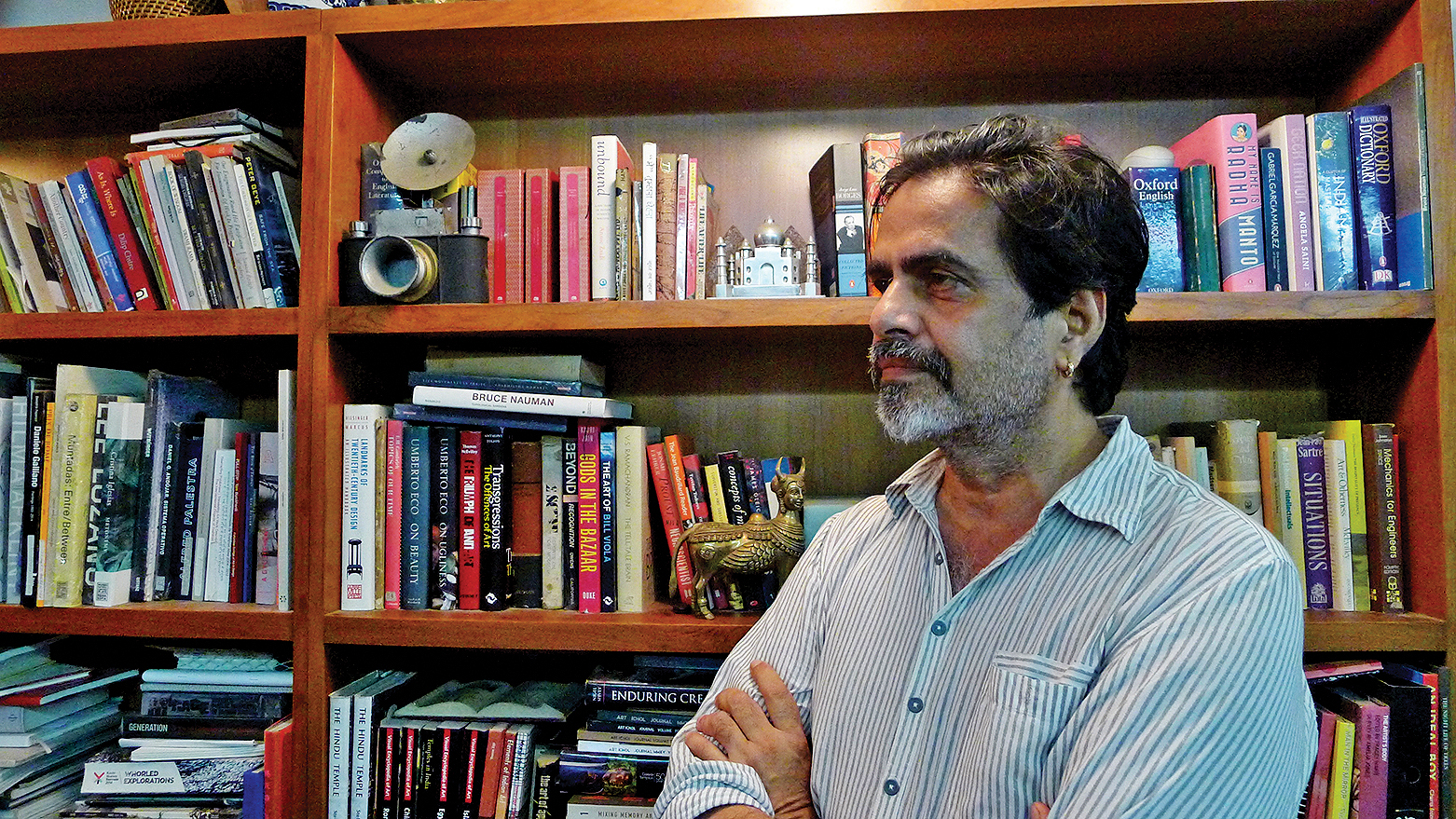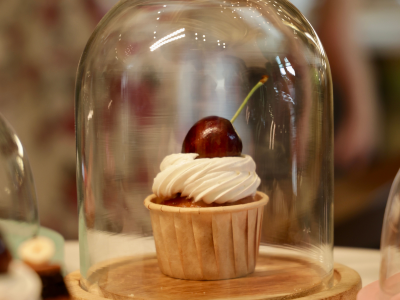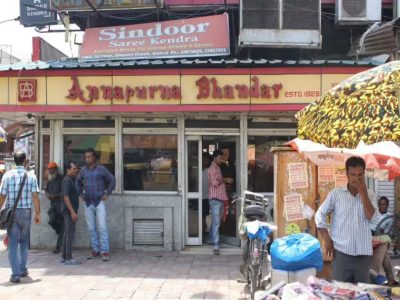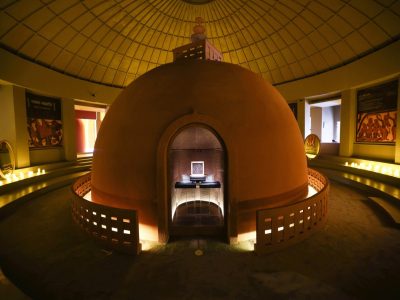Sudarshan Shetty employs inanimate objects to signify the essential unity in contradictions, saying opposites aren’t mutually exclusive
Sudarshan Shetty may not be conspicuous in a group of people. Donning a white shirt, he silently emits calm energy that permeates even a crowded room. One of India’s top global contemporary artists, he is no glib talker but in his own subtle style encapsulates the unsaid, feelings and ideas by way of objects.
Perseverance is a quality that’s often missed in the fanfare of success in the art world. Shetty was one of the few who survived for 10 years as a practising artist without any patronage. It was difficult but an important learning phase. He was ready when the world of art opened up alongside the liberalisation of the Indian economy in the early 1990s. The West showed interest in Indian contemporary art. Shetty found himself in the right place at the right time with evolved skills to express complex ideas by way of inanimate objects.
This is not the only reason for his success. He has the conviction to think original in his representation of the world around him, his art is a manifestation of deeper philosophy of the Nirguna (done without distinction or qualities or properties). Kabir’s poetry brings alive the philosophy of Nirguna, rendition of classical vocal maestro Kumar Gandharva is the best way to consume it. “Seeing the opposite in the same space,” Shetty says is his artistic ambition, “like Kabir said that you can’t find detachment from worldly affairs without devotion for the divine.” There’s a contradiction, a paradox.
Shetty endeavoured to create a spectacle using objects, “to depict collapsibility space.” His latest exhibition being shown at the Galleryske in Vasant Kunj is titled ‘Pieces Earth Left Behind’. He looks at objects that were in big use — say a typewriter or telephone — now redundant, “a residue of civilisation,” as Shetty puts it.
These objects have a nostalgic and cultural value. Shetty was always interested in objects as a mode of artistic expression. He has been a collector of the objects we dismiss as junk, sourced from chor-bazaars and flea markets. Think of it, museums showcase junk that was of prime use at some point in time but has now disappeared from our consciousness. These objects are a reminder of the past that shaped our present.
These ‘obsolete’ objects were replicated in wood by carvers. And the process of carving these objects into wood, transformed a junk into a piece of art — the metamorphosis was almost seamless. The placing of these ‘artifacts’ for display is also an artistic pursuit. “The idea of parallel: the original junk and the making of art—is a joke on the art objects,” says Shetty.
Why is an artist indulgently making fun of art? “Yes, I’m not the only one,” he says and adds, ”Objects have an aura. Junk consists of redundant objects. They acquire a new function as an art object. The dichotomy of two positions is interesting to me.”
To understand art, it is pertinent to peep into an artist’s life. Shetty grew up in ‘Bombay’, his father was into Yakshagana, a traditional Indian theatre form developed in Karnataka that combines dance, music, dialogue with a unique style and form. Part of the act involves critically examining the epic that’s been enacted. Shetty’s father would perform that ‘critical’ role, which could last from 5 minutes to a couple of hours.
Shetty’s family was supportive of his artistic pursuits that started very early in his life. A loner who grew up in Mumbai’s chawls, he was good at drawing. He was lucky, for he was blessed with good teachers. KN Prabhu mentored him in school. He was fascinated by film posters, would stand and watch them being painted for hours. He won many art competitions at school and by the time he was 16, was making money converting pictures into painted portraits.
He joined Sir JJ School of Art in Mumbai without the knowledge of his family. When they came to know about it, they were supportive of his move: “Let him do what he wants,” they said. Joining art school opened a whole new world for Shetty. Prabhakar Kunte was a teacher who finds mention as a big influence.
He gained a global perspective to art. A good library that subscribed to art journals from all over the world gave him the necessary exposure to the contemporary art scene beyond India. He was particularly fascinated by the American abstract impressionism, artists like Jasper Johns. The idea of the city, surroundings resonated in his mind. He wanted to tell stories using objects, not just images.
In the mid-1980s, after school, he did many odd jobs related to art. He taught drawing at the National Institute of Design, Ahmedabad. He was fascinated by architectural concepts and design ideas that he’d incorporate in his art in years to come. He came to Delhi in the early 1990s, met scenographer, interior designer and art curator Rajiv Sethi, and got some assignments.
Shetty’s first major solo show called ‘Paper Moon’ was held in Rabindra Bhawan. This was in 1995 when he created art installations held together using cotton tensile ropes, fragile and shaky, depicting a world on “the verge of collapse.” He was now a known name in the art world as a conceptual artist who could think out of the box, was “playful” and “break new ground”. He played with the idea of “collapse” and took it to another extreme in an exhibition a decade later, called ‘Love’ or ‘One’s Own Collapse’.
He created ‘Shoonya Ghar’— an architectural allegory of stories that’s inspired by a doha (couplet) of Gorakhnath, a great 12th century mystic poet. Depicting the idea of the composite whole that can’t be deconstructed, the moment it’s deconstructed it loses meaning. Shoonya Ghar is a gigantic set that now stands in an abandoned quarry on the outskirts of Mumbai, originally built at Dr Bhau Daji Lad Mumbai City Museum. Through the length of the film it stands as a parallel narrative, is thus both “mediation and a performance.”
In 1993, Shetty for the first time travelled out of India to participate in an art show at Rotterdam in the Netherlands. And now he’s one of the best-known contemporary artists from India. “I don’t take the mantle of representing India,” he minces no words. “There’s a point of view—the dominant point of view in the art world. I make it difficult. A lot of international curators don’t understand my work—particularly that opposites can be experienced in the same space, as they aren’t mutually exclusive.”
His art in that sense is challenging the long-held Western notion of individuality as against “essential unity” even between seeming contradictions. And that’s what makes Shetty’s artistic tryst so compelling. The artist employs inanimate objects to signify essential unity even in paradoxes and contradictions. And emits this aura of deep calm — a paradox in itself. He manifests his own art.





